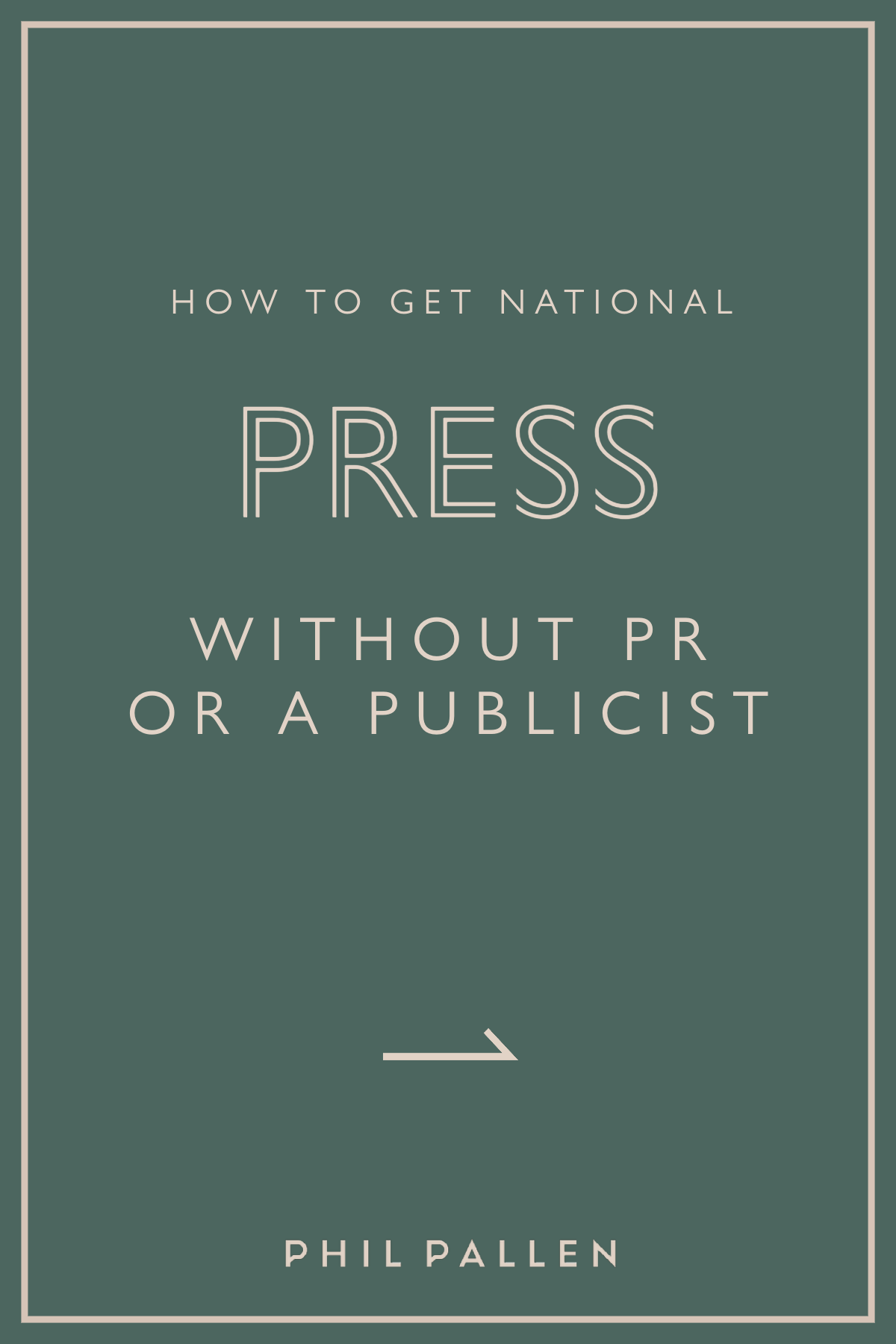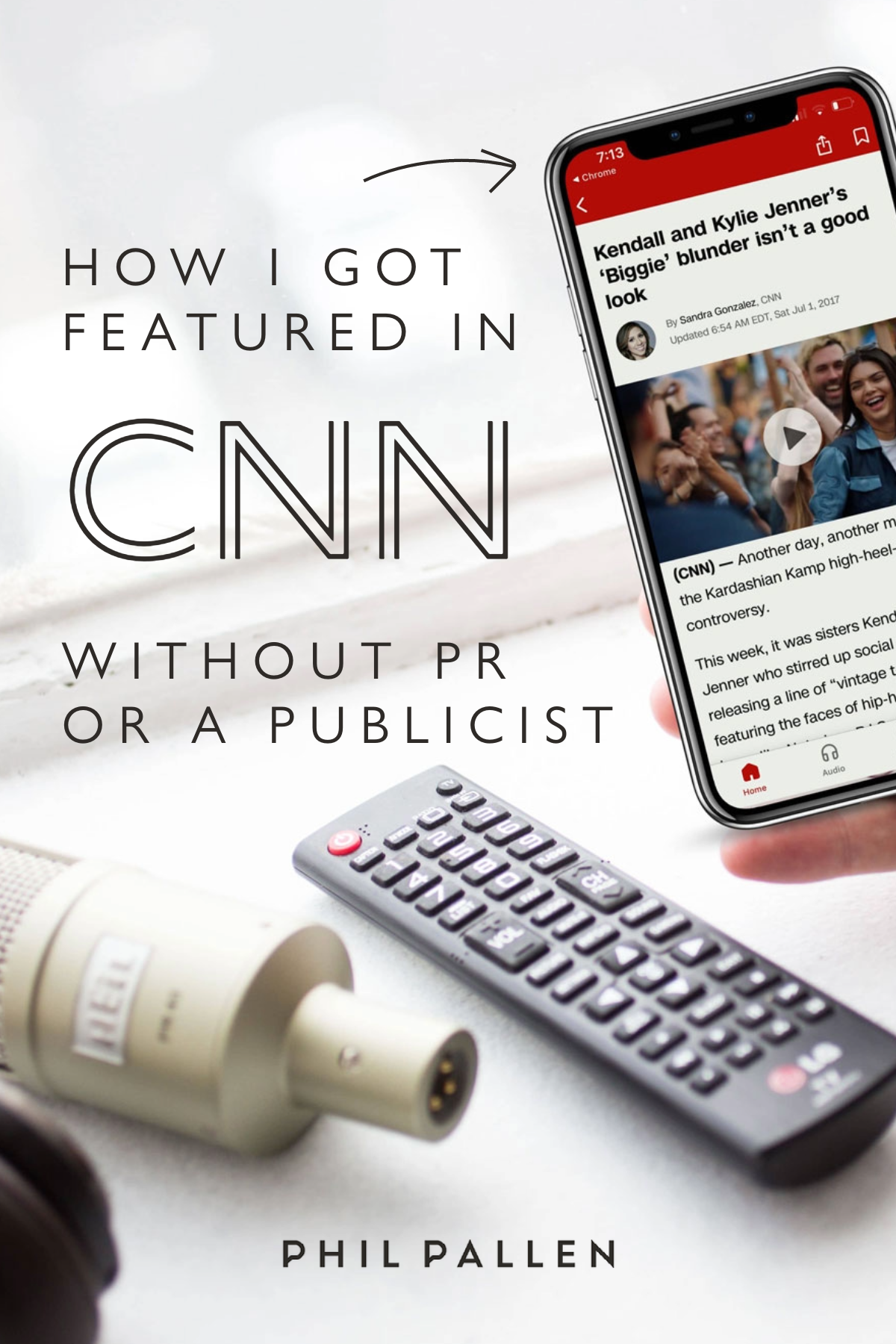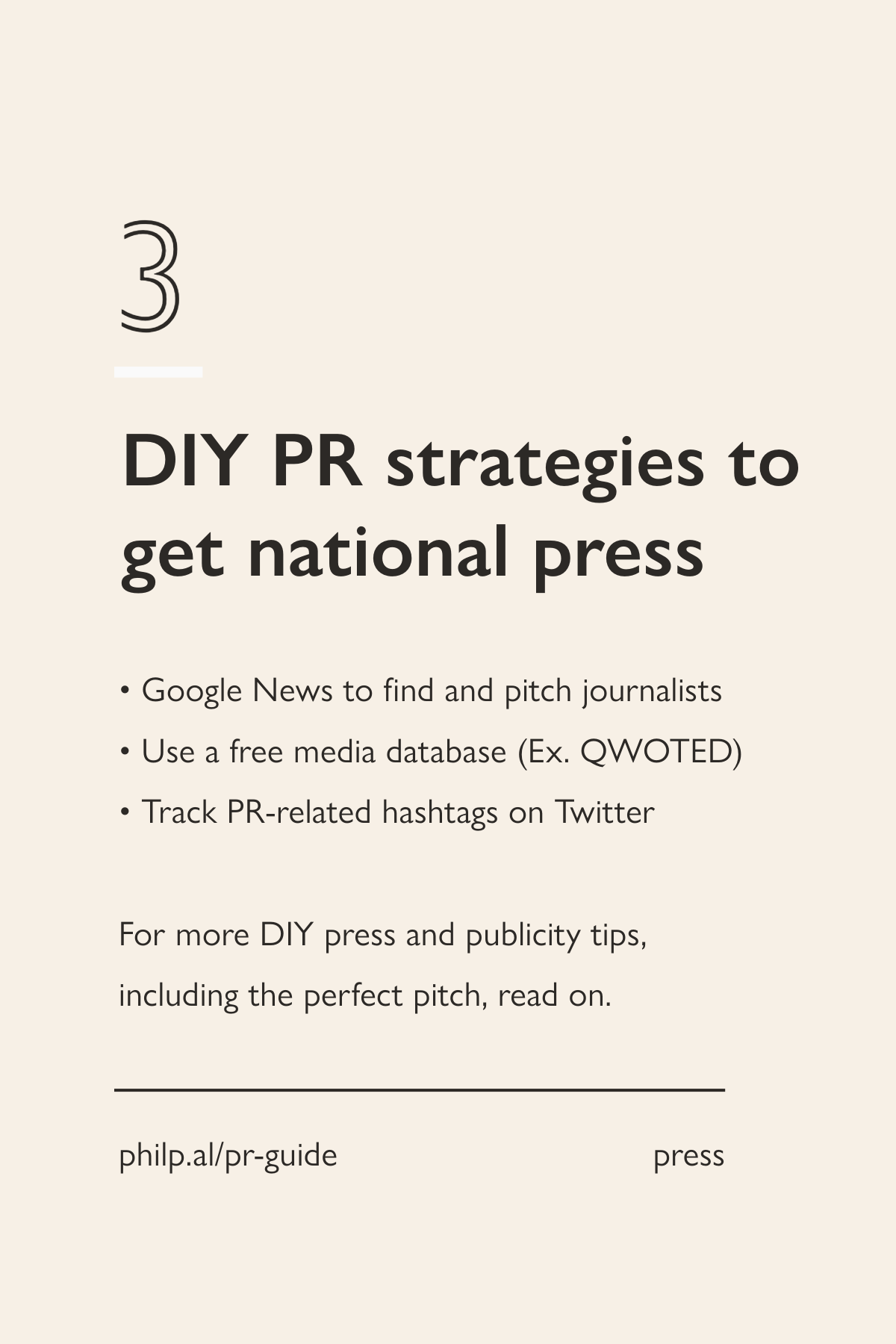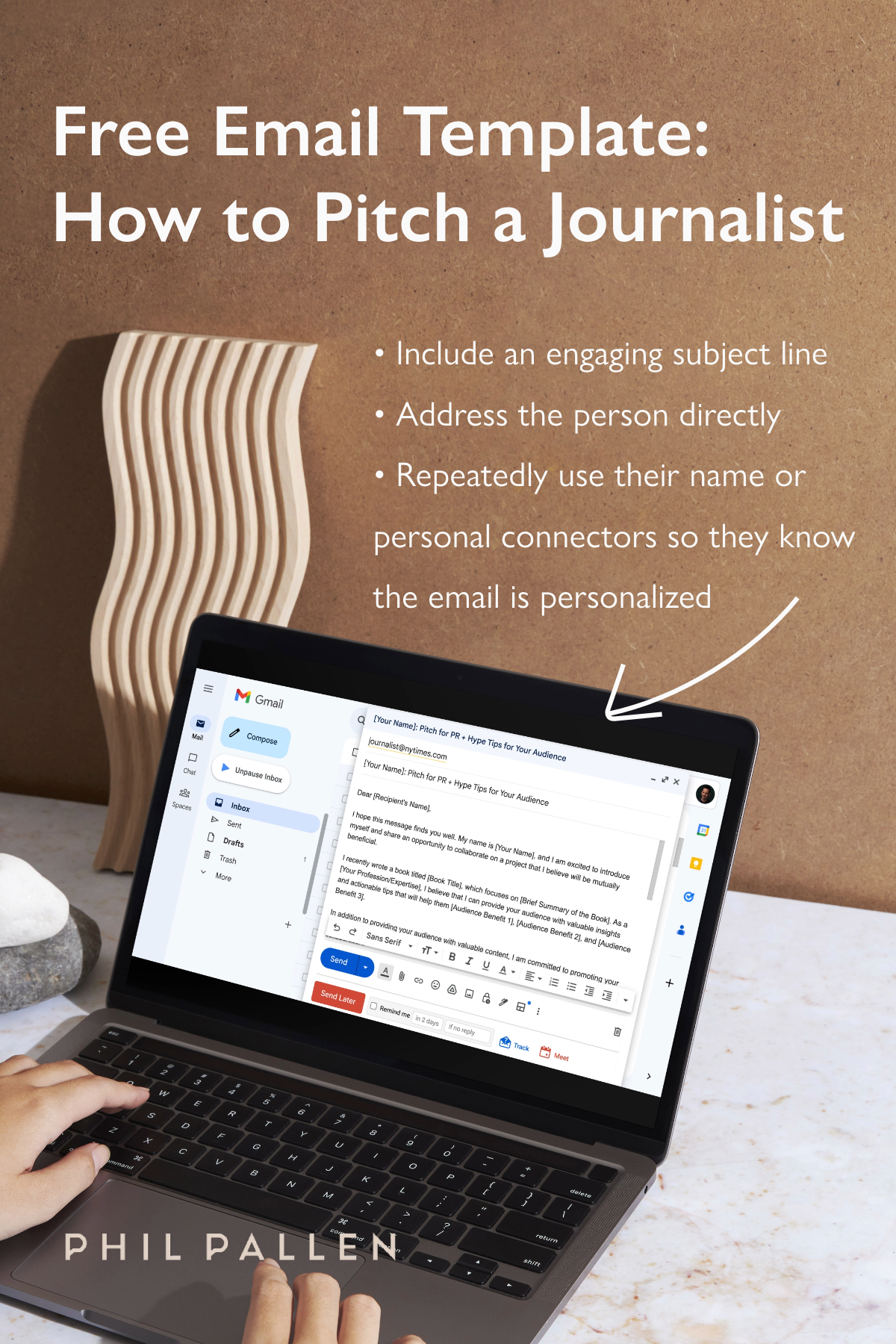How to Get Press Without PR or Publicist in 2023
Looking for ways to get press without a PR team or publicist? Check out these tips for DIY publicity, including social media, content marketing, and networking.
Generating press is more important than ever because industries and markets are competitive. You want anything that helps you stand out from the crowd and validate your expertise. I can speak from experience on the process and merits of creating buzz—I’ve been featured in publications like CNN and the Daily Mail, or TV programs like Access Hollywood, Entertainment Tonight, and others. Media exposure and online promotion have helped grow my business and forge lifelong connections. Let’s talk about how you can do it too.
Publicity online can help build credibility, trust, and authority with your audience. However, you might feel it’s impossible to get publicity without spending thousands of dollars on a PR firm or publicist. I’m here to prove it’s not impossible.
Let’s discuss how to obtain amazing press through self-promotion, pitching, and more.
What exactly is press in 2023?
Press, public relations, and publicity all leverage the power of media outlets (traditional and digital) to help promote a business or brand to an audience. Online publicity has the potential to help a business or person become better known, improve one’s reputation, and even change public opinion.
One of several appearances I’ve had on Access Hollywood as a talking head discussing celebrity personal brand snafus like Justin Bieber, Oprah, Beyonce, Kim Kardashian, and others.
What is self-promotion or self-hype?
I’ll be the first to say it: from the beginning of your career (and even much later on), you should aim to be your own number one fan. You’ll need to learn how to consistently hype yourself up and promote your brand. It can feel uncomfortable doing this, but with practice comes comfort. The more you do it, better you’ll get.
Hyping yourself up is about having the confidence to put yourself out there. It’s about recognizing your strengths and being willing to showcase them. It’s not bragging or boasting, but highlighting how your skills and assets can benefit others.
Rather than only talking about yourself, it's about framing the ways you can support someone as a business. It's also about identifying the needs of your audience and clearly demonstrating how you can meet them. My friend Lucy Werner is a master teacher of this art—so much so that she has a brand and book called Hype Yourself, which I fully endorse reading.
Hype Yourself by Lucy Werner is a no-nonsense PR toolkit for small businesses, which I’ve read and fully endorse as a methodology for promoting (no, hyping!) yourself.
5 tips for effective self-promotion
#1. Know your strengths
Before you can promote yourself, you need to know what you bring to the table. Identify your strengths and consider how they can benefit others. Show them what you’re made of.
#2. Focus on benefits
When promoting yourself, don't focus entirely on yourself. Instead, focus on the benefits you can provide to others. How can you solve a problem or make someone's life easier? Solutions bring interest. How do you stand out?
#3. Use storytelling
People remember stories. When promoting yourself, use storytelling to illustrate your strengths and experiences. This will make you more relatable and memorable. I try to be as engaging as possible when I’m speaking with a client or delivering a keynote presentation, including lots of anecdotes and storytelling. That way, they’ll never forget me.
#4. Practice your elevator pitch
An elevator pitch (or a brand sentence) is a short, persuasive speech that you can use to introduce yourself or your business. Practice your pitch until you feel confident and comfortable with it. Better yet, download and complete my brand statement formula worksheet.
#5. Network
Networking is a great way to promote yourself and your business. Attend events, join groups, and connect with people on social media. Build relationships and be willing to help others.
My personal brand statement formula worksheet helps people summarize who they are and why people should care. It’s my tried-and-true method that’s worked for hundreds of people since 2011.
Before you start promoting yourself, you should:
Know your business goals
It can be easy to jump eagerly into self-promotion, but I will need you to take a step back and pause for a second. Before you start, you need to understand your business goals clearly. This will help you define what you want to achieve with your efforts.
Identify your audience
Get delightfully specific about who you’re targeting. I don’t want a general demographic range like “men and women between the age of 22 and 54…” but instead a specific description of your ideal audience, including their name, their ambitions, their goals, and their behavior.
Consider your values
Understanding your values will help you connect with promotional opportunities that align with those beliefs. Without them, you’ll be grasping at any opportunity that you think will work (without much substance). In the end, this approach could hurt you more than it can help. Opportunities that also align with your values will help you connect with your intended audience more seamlessly.
Establish your online presence
A busy journalist needs somewhere or something to reference quickly to understand who you are and why they should care. I recommend having a page on your website that explains all this, similar to my Speaking page, and also consider having a media kit readily available for someone to download. A good example of this is Jasmine Star’s website by GoLive.
In 2017, I was interviewed for and featured in this CNN article as a brand celebrity expert on Kylie and Kendall Jenner's problematic new fashion brand.
When seeking connections, avoid the "spray and pray" approach.
I want to warn you of the temptations of casting a wide net when doing outreach. It will rarely work out in your favor. The “spray and pray” approach is mass pitching to journalists and publications without much thought or targeting, in hope of these media contacts featuring you. This approach lacks substance and genuine connection. It’s incredibly impersonal. Don’t make the mistake in assuming everyone needs to know about your brand, product, or service. In many cases, it can be read as spam and can either be ignored entirely or do more harm to your brand’s reputation than good.
When doing outreach (for podcast guesting, guest blog post writing, or media coverage), I usually put a list of 10 people together to start, including some of whom I know directly. Existing relationships will always trump cold pitches. From there, I thoughtfully craft a pitch and a follow-up.
Brand Therapy
184. How do you generate publicity for your personal brand? (f. Lucy Werner)
How can you get PR without time or a publicist? 📰 You’re going to find out in this riveting episode of Brand Therapy. Hosts Phil and Lauren meet with Lucy Werner, hype queen and PR extraordinaire, to get the 411 on getting publicity as a small business owner. You’ll learn how to be strategic, send the perfect pitch, and get your name out there once and for all.
Formula for crafting the perfect pitch
Alright, enough about the pre-work like researching, planning, and preparing. Here’s the formula for pitching. Here’s the structure I use for an email pitch (or I do an abbreviated version for a direct message) when starting my outreach. This outline touches all of the necessary bases to pitch yourself properly. I always:
Include an engaging subject line
Address the person directly
Repeatedly use their name or personal connectors so they know the email is personalized
Here’s a sample of the email, which you’re welcome to copy and paste to use as inspiration for your own:
Subject Line: [Your Name]: Pitch for PR + Hype Tips for Your Audience
Dear [Recipient's Name],
I hope this message finds you well. My name is [Your Name], and I am excited to introduce myself and share an opportunity to collaborate on a project that I believe will be mutually beneficial.
I recently wrote a book titled [Book Title], which focuses on [Brief Summary of the Book]. As a [Your Profession/Expertise], I believe that I can provide your audience with valuable insights and actionable tips that will help them [Audience Benefit 1], [Audience Benefit 2], and [Audience Benefit 3].
In addition to providing your audience with valuable content, I am committed to promoting your brand to my followers and subscribers. Here are three ways I will promote your brand after our collaboration:
I will share the interview or article on my social media channels, which have a combined following of [Number of Followers/Subscribers].
I will mention your brand in my newsletter, which has [Number of Subscribers] subscribers.
I will provide you with a testimonial to use on your website or in your marketing materials.
My credibility in [Your Field/Industry] includes [Brief description of your credentials and accomplishments]. I am confident I can give your audience valuable insights and help them achieve their goals.
Thank you for considering this opportunity to collaborate. Please find my bio links and additional promotional materials attached.
Best regards,
[Your Name]
Tactic #1: Use Google News to find and pitch relevant journalists
Identifying relevant journalists and outlets is a crucial step, especially if you’re doing this on your own. With Google News, you have a powerful tool at your disposal to find the right journalists to connect with. Here's how to make the most of it.
Start by Googling a relevant query or keyword for your pitch and then filter by “news” to see recent articles by journalists you might want to pitch.
Browse the results and consider:
Relevancy: What specific topics related to your product or service are newsworthy—what angles are people already talking about?
Recency: How has your product or service been discussed in the news in last 3 months?
Start by Googling a relevant query or keyword for your pitch and then filter by “news” to see recent articles by journalists you might want to pitch.
When you find a journalist or outlet that catches your eye, take the time to read their articles and get a sense of their writing style and preferences. This will allow you to tailor your pitches and increase your chances of grabbing their attention. I typically try to avoid Entrepreneur and Forbes, since those articles are not actually written by journalists—instead, founders, CEOs and thought leaders that pay to be published. They likely don’t want your pitches.
Another great feature of Google News is the ability to explore related articles and publications. By doing so, you can discover additional journalists and outlets that may be a good fit for your PR outreach.
How to find a journalist’s email address
Many of the publications will blatantly list how you can get in contact with the journalist that’s written the article. Click their hyperlinked name below the article title to reach their author profile. There, you’ll often spot their bio (to confirm they’re actually a journalist), sometimes their email address, as well as their social media links.
An example of where a journalist’s contact information might be listed—on their author’s profile on the publication’s website, which you can reach by clicking their hyperlinked name below the article’s title.
If no information is listed, don’t worry—there are two tools that I love for finding someone’s email address:
Hunter.io: Simply enter the domain of the publication and browse from the options listed. If the journalist isn’t listed, you can look at the email format of the others and make your best guess.
Email-format.com: This free tool will actually show you the way email addresses are formatted at particular companies.
Using these discovery tools, you’ve got enough information to make an educated guess on where you can send that perfectly crafted pitch.
Tactic #2: Use a free media service to connect with journalists
There are entire online services dedicated to matching journalists and individuals seeking media exposure. I’ve tried a bunch of them. Consider signing up for these:
QWOTED: a platform that connects PR professionals with journalists seeking sources for their stories. It allows journalists to post requests for experts in specific industries, and experts can then respond if they are interested and available. I've personally had luck finding journalists on this platform who were actively looking for sources in my key areas of expertise.
HARO: An abbreviation for “help a reporter out” offering another platform where journalists post requests for sources. You can sign up as a source and receive daily emails with journalist inquiries. In full tranparency, I’ve had less luck on this website because it seems more saturated and competitive.
Using both QWOTED and HARO can expand your network of journalists and increase your chances of finding the right contacts for your PR outreach. Remember to craft personalized and compelling pitches when reaching out to journalists you find on these platforms to maximize your chances of success.
Tactic #3: Track PR-related hashtags on Twitter
Twitter is often the second place journalists and bloggers go when they need an expert for a source. The first place is their own rolodex of experts. In order to get on their radar, you need to make contact first, and this is a good way to do it. On Twitter, follow hashtags like #journorequest, #PRrequest, or even #bloggerrequest. These threads can get overwhelming quickly because they’re not necessarily filtered by keyword or topic that’s relevant to you. If you want to take this one step further, you could use a tool like Tweetdeck, which gives you an interface of Twitter with more controls and flexibility.
Tweetdeck by Twitter is a great tool for organizing columns to track certain hashtags, including those where journalists post to find experts on topics.
It’s going to feel like you’re always being told no
One final piece of advice I can give you is to get comfortable hearing the word "no." I realize it can be disheartening, but it’s important to understand that “no” doesn’t always mean rejection. In fact, “no” can be an opportunity to learn and improve your pitching experience.
Rejection is a natural part of the decision-making process. Everyone has their preferences, needs, and priorities. Sometimes this means you will align with those needs; other times, you won’t.
Another important point is to never take anything personally. These rejections aren’t an attack on your achievements or abilities. If anything, you can use this to ask them why they decided against working with you. Use this feedback to refine your approach and tailor it better to suit the needs and preferences of your target audience.
It's also important to remember that rejection is not permanent. Just because someone says "no" now doesn't mean they'll say "no" forever. Keep in touch with them and continue to refine your approach. You never know when circumstances may change or when your pitch or self-promotion could be a better fit in the future.
Final thoughts
Remember that getting press coverage is not an overnight process and that it requires consistent effort and dedication. Keep track of your results, learn from your successes and failures, and continuously adapt your approach to align with your goals and target audience.
With the right mindset, tools, and tactics, you can successfully generate buzz for your brand and establish yourself as a thought leader in your industry. So don't be afraid to take the initiative and get creative with your PR efforts. Who knows? You might just catch the attention of your dream publication or journalist. I still sometimes pinch myself when I think about the amazing opportunities self-promotion has provided throughout my career.













